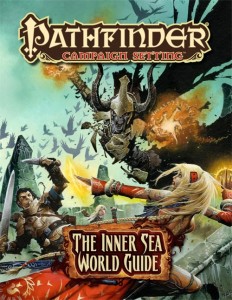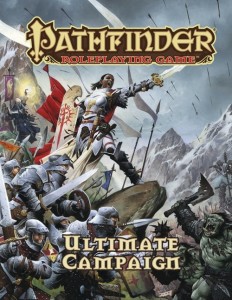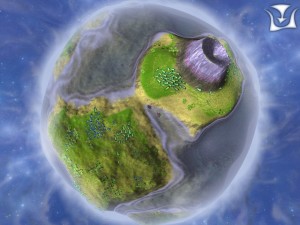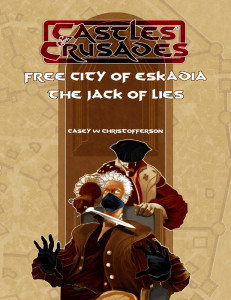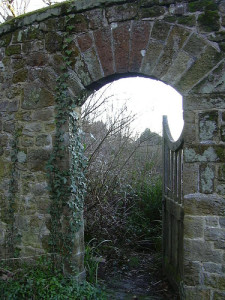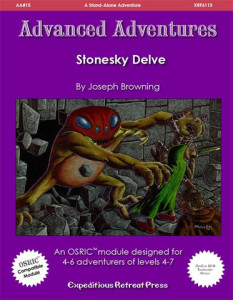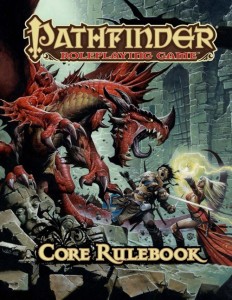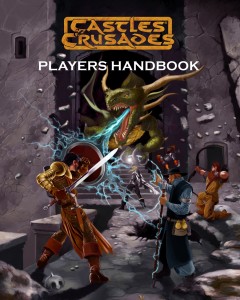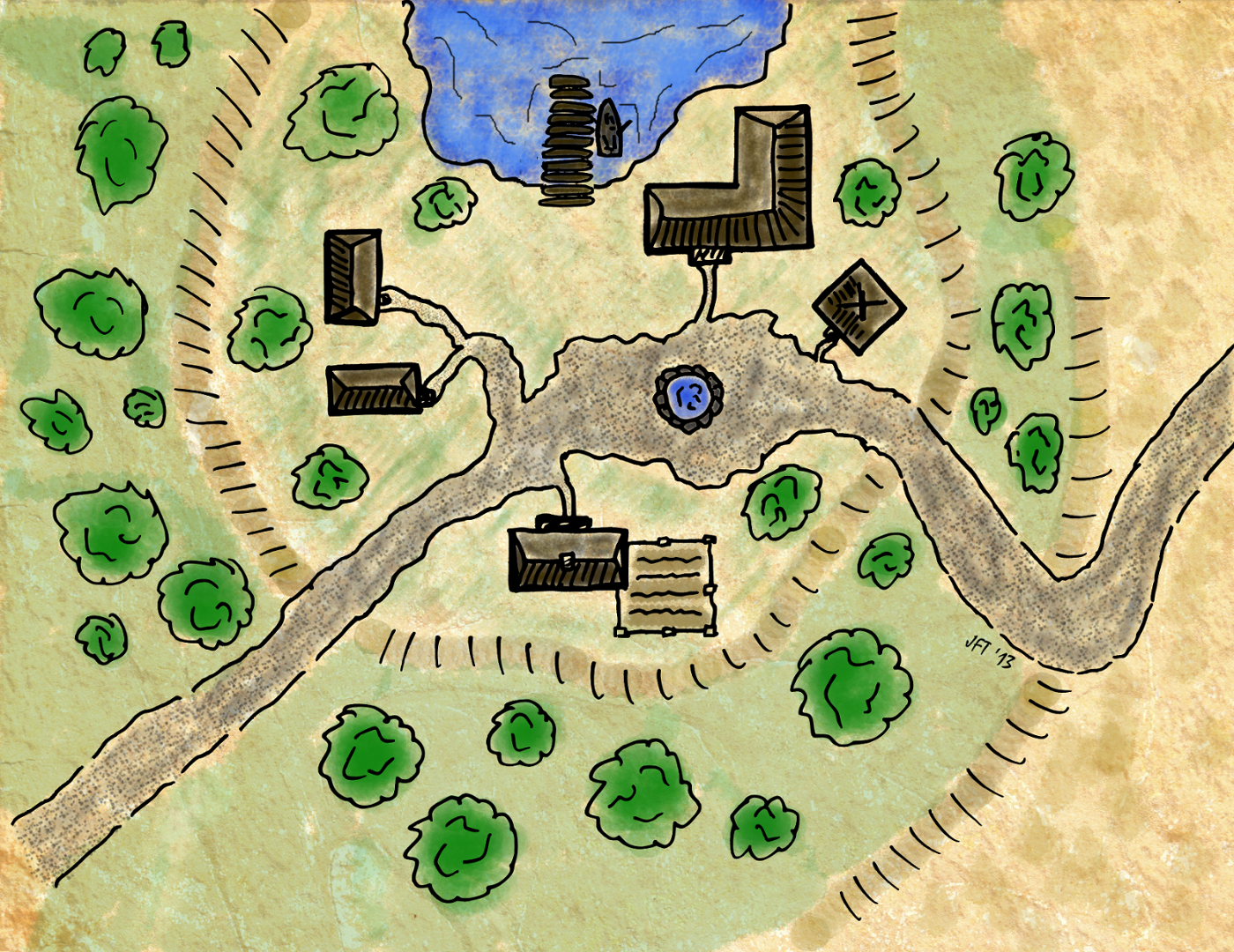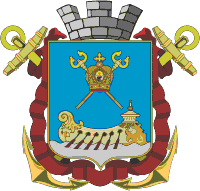After last week’s post about why I prefer Pathfinder as a gaming system for my fantasy games I had a good discussion with some gamers about how much setting was involved in the core rulebooks and the Beginners Box. I had always been fairly close to the Dungeons and Dragons (D&D) franchise through it’s various incarnations that the lack of setting material in these books did not surprise me at all. However there are a bunch of other games out there who apply a system and a setting in one main rule book so it got me to thinking about how many homebrew campaigns were out there for Pathfinder and who simply spent the extra money to get the PDF or actual books for the Pathfinder Campaign setting in Golarion or a third party setting.
Let us unpack this issue a little and see what we have. Pathfinder’s core rulebook is aimed at providing you as a player or a Games Master (GM) the rules to the setting as a whole. It gives player classes, character creation tips, spells, traps, equipment, poisons combat advice and the like. It is largely a book of rules with very little setting. The rules are the open source material that have been built on top of the D&D 3.5 Open Source rule set. Stripping back the rules you find the small portions of the setting that are included in the setting which is the Intellectual Property (IP) of Paizo and therefore not open source. It is their copyrighted material that they will protect. If you want the clearest example of this and you have a Pathfinder rulebook handy, turn to the Cleric character class description. In this description you find a table that lists the major Gods of the Pathfinder Chronicles describing their portfolio, domains and favoured weapons. Look at the online resource Pathfinder Reference Document you will notice this table is nowhere to be seen.
The reasoning is that the material is the IP of Paizo and it is based on a setting that is uniquely theirs. They will be very upset if you handed their setting material out for free without their express permission. It is the main reason that none of the setting materials have been put up in a fashion similar to the PRD. They could, but they want you to get a taste for Golarion through the snippets they offer in the Core rulebooks (they are scattered through there liberally) and decide that this is a world you want to play in. Now the discussion I was having after last week’s post was with a couple of gamers who felt that this was an expensive process for players to get into the Pathfinder game. I found this odd as I always knew that the D&D model (and Pathfinder as well I suppose now) is that they provided the rules and guidelines on what to do with a setting and you made the choice. You could make your own setting or go buy another book with a prepared setting.
I also realised in this discussion that the reason that the Pathfinder Rulebook is so large is that they try to give you all you need to create a setting. Building encounters, environments and NPC’s is all there for you to take a building block approach to your world and develop it. In the example of the Gods you are free to create your own Pantheon of Gods for your own setting. They never say that you must use those that are included. In a game that is all IP (both system and setting) like Earthdawn there is as much setting material and plot hooks in the main rulebook as there are rules. It presents itself as a package for play in their developed world using their system that goes with it. Further books in Earthdawn tend to expand the setting much more than the rules where further books in Pathfinder expand the rules much more than the setting (though new classes can give the setting a different feel).
This means there are two types of games. Pathfinder is definitely a builders game where the GM is going to have to do a lot of work in preparing their world if they do not buy a setting that is pre made. Earthdawn is a setting complete game where the GM is more likely to spend time ensuring the adventures she makes fall in line with the canon of the story.
Keeping Pathfinder Affordable
So, if you are not terribly creative and think that building a world is out of the question how can you keep the costs down to get into Pathfinder. It is apparently the most popular tabletop RPG at the moment but it can be expensive having to buy the rules and then buy the setting. So I have come up with some options of how to go about this.
-
Don’t buy the rules! That is right, don’t spend a cent on the rules books. Use the online Pathfinder Reference Document website as your rules source. This way all the rules goodness that is Pathfinder is free of charge and at your fingertip (but without the art and beautiful new book smell)
-
Buy a reduced price set of all the rule books. In this wonderful world of mobile computing if you have a smartphone (iPhone or Android) or a tablet (iPad or Android) there are cheap App options available to you. The prices vary depending on the part of the world you are in but you should be able to buy an App that contains all the Pathfinder core book rules for under $8 that is available wherever you take your mobile device without needing internet access
-
Buy PDF’s of the books and use eReaders. You can buy all of the Pathfinder books from Paizo in the form of a PDF. These are a great deal cheaper than the hard copy books and contains both setting and rules
-
Spend the money I just saved you on a setting! Be it Golarion from Paizo or one of the optional third party settings that have been released! Book or PDF.
-
You can even buy settings from D&D 3.5 edition that people are selling over eBay (and the like) cheap because they are compatible as well, keeping the costs down!
The other option if you are feeling creative is to build your own world! The main rulebooks give you all you need and more to create a world from scratch. What is more there is a wealth of information out there on the internet from people who do this as standard. Most of us call it a homebrew campaign or world. It is a world or country or land or village where things act in the form that you want them to.
It can be a daunting task building your own setting but it does not need to be. It is a rewarding experience to know that it all came from your imagination as a GM and I want to help this process. There are at least 101 “How to make your own campaign” guides out there on the internet so let us make it 102. Next week I will blog about how to make your own campaign world, with a slant on Pathfinder but also generic enough to be translated to any system. Don’t expect it to fit all in one blog, in fact it may be a fortnightly or monthly blog that we revisit regularly but it is an important one and one I hope you join me on the journey. In fact if you have any specific questions you want answered hit the comments and let me know! I’ll try to incorporate the issues.
Mark Knights is 39 year old guy living in a small rural town called Elliott in Tasmania, Australia. I have been role playing since I was 11 years old playing the original versions of Dungeons and Dragons, MERP, Elric, Dragon Warriors and the like amongst other genre games. I played D&D 2nd Edition through the 90′s but I ran Earthdawn for my fantasy setting and loved it as a GM. When 3rd Edition came out for D&D I tried it but found it too heavy on rules. I ignored the 3.5 edition of DnD in favour of Earthdawn (big mistake) as I thought it was just a money spinner. When 4th Edition DnD came on my players and I gave it a red hot go but hated what it had dumbed the game down to be. On a trip to Melbourne to buy some 4E stuff from a hobby store an old mate of mine pointed me at Pathfinder and in a Fantasy setting I have never looked back.

